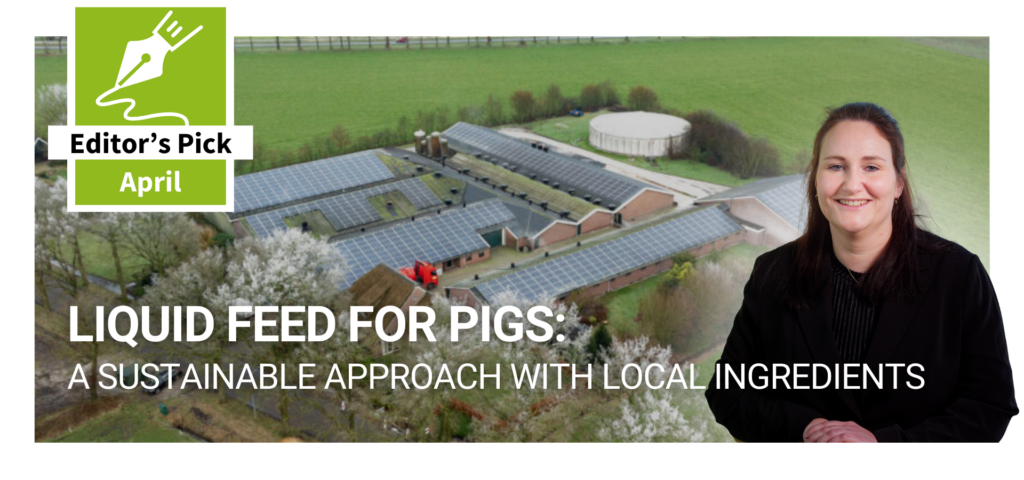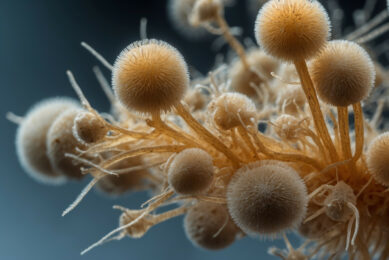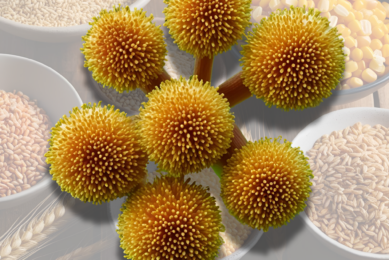Comparison of mycotoxins in maize and its byproducts

Maize and maize byproducts are the raw materials mostly used in poultry and swine diets. Nutritionists prefer to incorporate these ingredients in diets owing to their excellent contribution to the nutrient profile with minimal anti-nutritional factors. A limiting factor of maize, however, is its susceptibility to mould infestations in the field and storage, and subsequent mycotoxin contamination.
MYCOTOXINS 2025: Utilising technology to detect & mitigate – read all articles
Maize is quite susceptible to Fusarium and Aspergillus mycotoxin contamination, leading to production of the “Big 6” mycotoxins: aflatoxins (AFLA), ochratoxins (OCHRA), T-2/HT-2 toxin (T2HT2), deoxynivalenol (DON), fumonisins (FUM) and zearalenone (ZEA). Some emerging mycotoxins, such as moniliformin, fusaric acid, and Alternaria toxins, are also quite common in these raw materials. When mycotoxin-contaminated maize is further processed, like in the case of maize DDGS and maize gluten meal, further mycotoxin concentration can occur.
This article provides an overview of average “Big 6” mycotoxin contamination levels in maize, maize DDGS, and maize gluten meal from 2020 to 2024. Samples were collected from feed mills, farmers and integrators around the globe and subjected to mycotoxin analysis using analytical equipment such as ELISA, Lateral Flow (Mycomaster), Biochip Array (Randox) and LC-MS/MS. The equipment connects to Trouw Nutrition’s central database which stored the data used in further analysis.
Maize
Analysis of mycotoxins over the five-year period showed average concentrations of 1073ppb for FUM (Table 1). It is expected that the global average for FUM will be greater in maize than any other mycotoxin, but DON concentrations can overseed FUM in temperate regions, like Europe and North America. FUM concentrations were followed by DON (655ppb), ZEA (70ppb), T2/HT2 (29ppb), AFLA (8ppb) and OCHRA (3ppb).
Maize v/s maize DDGS
As expected, concentrations of all mycotoxins increased in maize DDGS as compared to maize itself (Table 1). The highest increase was observed for OCHRA (7.7 times) followed by DON (4 times), T2HT2 (2.9 times), ZEA (2.6 times), AFLA (1.3 times) and FUM (1.1 times). These differences may be due to the differential location of mycotoxins within the grain structure as well as their solubility.
Maize DDGS is the dried residue remaining after most of the starch and sugar fraction of maize is fermented with yeasts to produce ethanol. Following fermentation, the ethanol is removed by distillation and the remaining residues are dried. Maize DDGS typically contains a higher concentration of mycotoxins than maize because during the ethanol production process, where maize is used as the feedstock, non-fermentable components like mycotoxins-containing fibre become concentrated in the DDGS byproduct. This leads to a significantly higher level of toxins compared to the original maize grain. Essentially, the mycotoxins are left behind while the ethanol is extracted, resulting in a concentration effect. DDGS also can be more prone to mould growth during storage due to its high moisture content, which can further increase mycotoxin levels.
Maize v/s maize gluten meal
As expected, concentrations of all the mycotoxins, except FUM, increased in maize gluten meal as compared to maize itself (Table 1). The highest increase was observed for OCHRA (6 times) followed by ZEA (5.3 times), T2HT2 (3.4), AFLA (2.4), DON (1.3) and FUM (0.8). This may be due to the mycotoxins’ location within the grain structure as well as their solubility. The results for FUM are unexpected and may be due to the limited number of samples analysed.
Maize gluten meal, a by-product of corn processing, is made by separating the gluten from other corn components, drying it, and grinding it into a powder. Maize gluten meal often contains a higher concentration of mycotoxins compared to whole maize because during the corn milling process mycotoxins tend to concentrate in the gluten fraction that makes up maize gluten meal. Essentially, the toxins are not evenly distributed throughout the grain, and the milling process can lead to higher levels in certain byproducts like gluten meal.
Maize DDGS v/s maize gluten meal
When the 2 maize byproducts were compared for mycotoxin concentrations, they behaved differently (Table 1). OCHRA, DON and FUM were at higher concentrations in maize DDGS while AFLA, ZEA and T2HT2 concentrations were higher in maize gluten meal. These differences may be due to the way these byproducts are processed and their chemical composition as well as the chemical properties of mycotoxins.
The key difference is that DDGS is a byproduct of ethanol production, containing a mix of corn kernel components left after starch is fermented. Gluten meal is a concentrated protein source derived from the wet milling process of corn, where the starch is separated from the protein-rich gluten fraction. DDGS has a higher energy content but lower protein than gluten. The current survey is based on globally sourced samples. Regional surveys might provide more realistic comparisons.
Setting up the right limits
The excellent nutrient composition of maize and maize byproducts make them essential ingredients in today’s poultry and swine diets. Their susceptibility to moulds and mycotoxins, however, is a concern. The survey revealed higher mycotoxin concentrations in maize by-products as compared to maize as was anticipated. Findings also highlight the importance of setting up the right limits for mycotoxin concentrations in different ingredients so that the concentrations in final diets don’t exceed practical guidance values.







